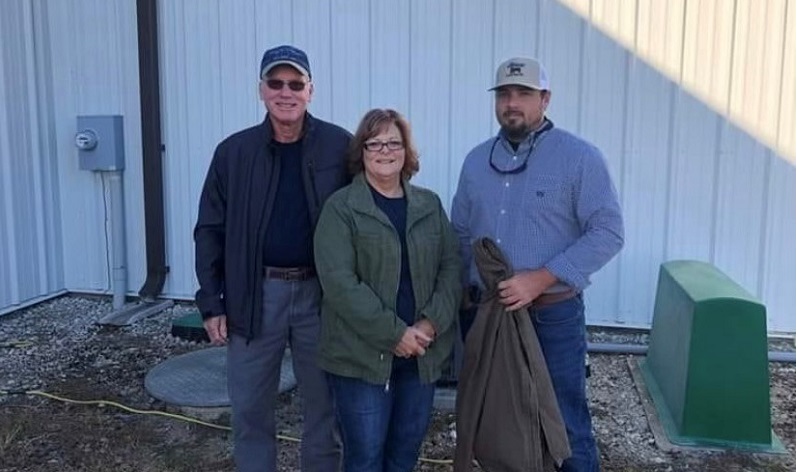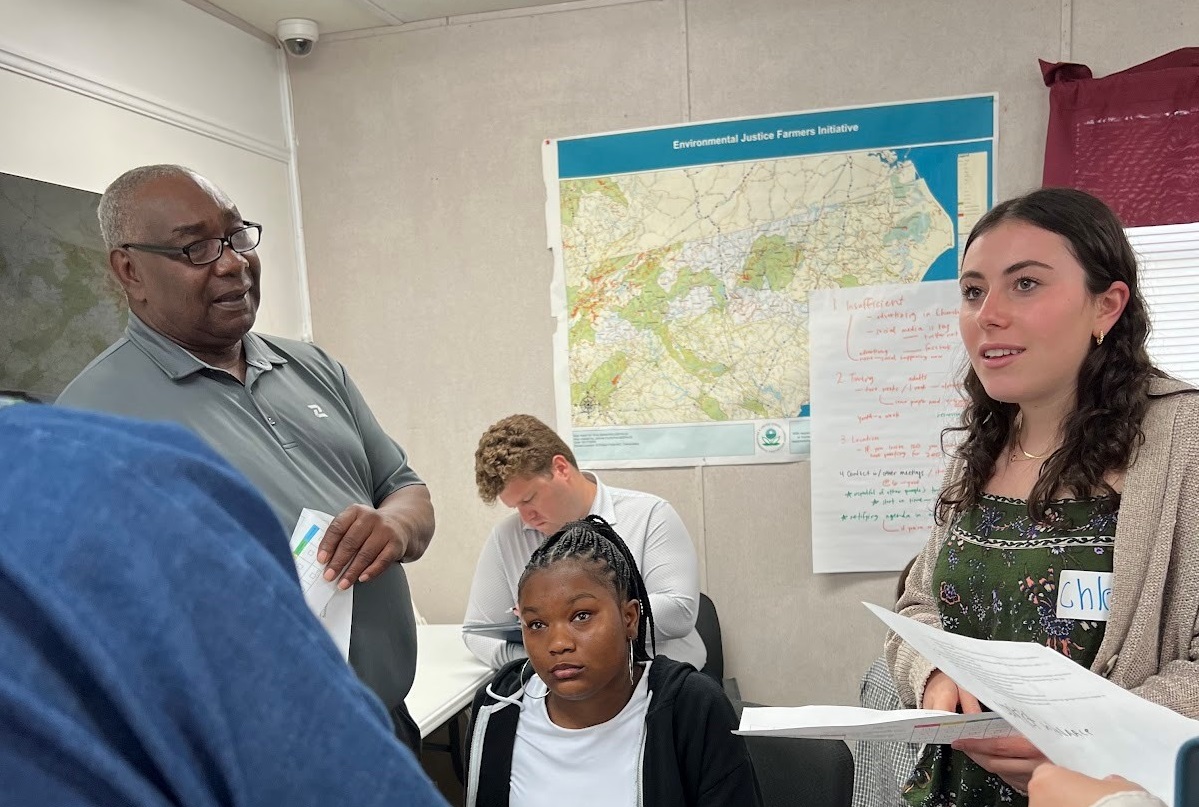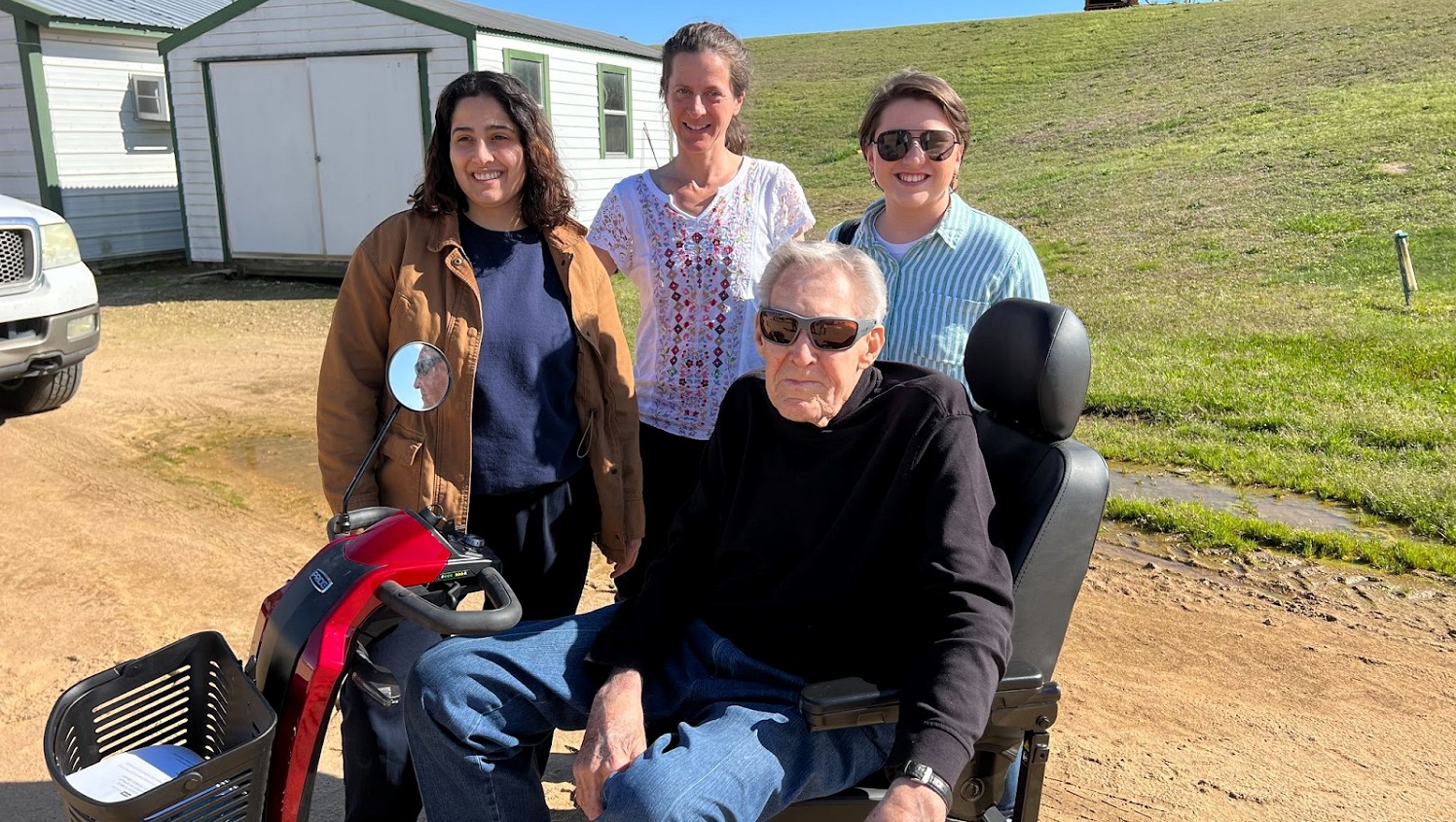Recycle, Repurpose, Reuse: Turning Oral Histories into Short Films
This post was written by Andre Taylor, a Public History MA student at NC State.
The scarred over second degree burns on the arms of Ramona Africa only told a portion of the story of how she and another person escaped an almost certain fiery death on May 13, 1985 in Philadelphia. During an October 2017 oral history interview, Africa spoke about just how hot the house in the 6200 block of Osage Avenue was after city police dropped a bomb onto the house to expel the 13 people inside [1]. The carnage saw 11 of those MOVE members – a radical, naturalist group from Philadelphia that was founded in 1972 – burned to death inside the house and the destruction of about 60 other homes in the block. Not only was the value of her traumatic memory valuable to “Burning Cradle of Liberty” – a short documentary I produced about the MOVE bombing – it served a greater purpose that included outreach to those who knew nothing of the event from three decades ago in Philadelphia [2].
Some people want the quick version of research and this where digital extensions aid large projects. As a public historian who specializes in the methodology of collecting memory, I have found that those hours spent interviewing subjects are not in vain and in fact, are critical to moving your research into diverse circles. It is essential to the work of the public historian that we create avenues to educate the public and utilizing a cinematic approach on a digital platform provides a much larger outreach and specifically reaches millennials who utilize digital platforms more than most.
“Burning Cradle of Liberty,” was specifically designed for millennials who want a condensed version of something that they can watch on the go. I also utilized research that indicates millennials are more prone to utilizing digital platforms to acquire knowledge and engage in activism [3]. Coupled with the notion that some millennials are engaged in current trends of police brutality, I found it my obligation to create educational material on an event that predates the current scope of police brutality. Reaching out to not just millennials but all members of the public expands the base of knowledge of all and this extension is critical to my being a public historian. Instead of discarding the oral histories I had collected for my research, I found a new purpose for them with the same mission of educating others.
Ramona Africa jumped at the opportunity to tell her story on a digital platform. She wanted her story to be told and to reach as many people as possible. It had been more than 33-years since the bombing and in that time, there have been millions of people born without knowledge of May 13, 1985. It is those people she wanted to educate about one of the darkest days in Philadelphia history. She wanted people to see her burns and hear of her escape from the blaze. During the interview, Ramona Africa disclosed that she never sought out to become a leader in the organization. She wanted to learn more about what MOVE was about and before long, she was directing their external communications, hosting press conferences and conducting interviews. This revelation created a depth to the actor in the narrative and added a new level to understanding who Ramona Africa is.
Packaging oral histories into documentaries not only gives a repurposed usage of collected memory, it presents an opportunity to be creative. You can decide what to use, how to use it and produce it for any audience you’d like. It was essential to the outreach component of my research to repurpose the oral histories of Ramona Africa and retired journalist Kitty Caparella. The dueling stories from an activist who was inside the burning house and a journalist on the outside intrigued me. The two actors in this story were amongst the few still alive who could recount what happened that day. Creating a short documentary allowed those interested in learning more about the MOVE bombing to not only see images of the carnage left after the fire but, to hear from those who were there. Much like I did in my paper, I chronicled the rise of Ramona Africa within MOVE; however, hearing the raspiness of her voice combined with the visible burns she sustained while trying to escape the inferno after the bomb dropped, viewers were able to develop their own interpretations about the event and those involved.
A barrage of questions flew from the audience following the screening of “Burning Cradle of Liberty,” at the Longleaf Film Festival in May 2019 in Raleigh, North Carolina. Viewers who were not aware of the event questioned why law enforcement used explosives to usher MOVE members from their home. There were also those who wanted to know to what degree race factored into the decision to use a bomb. During the production of the documentary, I wrangled with how the documentary would be perceived. I wondered if people would view the documentary as a propaganda piece or see it for what it was: Contemporary dark history.
Notes:
[1] Stevens, Joanna. In Goode Faith. King of Prussia, PA: Judson Press, 1992.
[2] Burning Cradle of Liberty, Https://Filmfreeway.com/Projects/1620842, 2017, www.drethehistorian.com.
[3] “Home Page,” The Millennial Impact Report, accessed July 16, 2019, http://www.themillennialimpact.com/.
- Categories:


